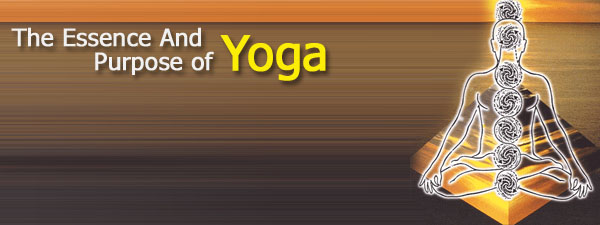
|
The human being is composed three elements, which represent unity: body, soul and spirit. The spirit is the spark connected with the principle; the soul is the plastic intermediary th can connect with the spirit and the empirical world; the body is the egotistic individualised complex that expresses itself through thought. The soul is the intermediary between body and spirit. It can dissipate its energies to by getting engrossed in the phenomenal or objective world or of it can concentrate upon itself and a return to the innermost essence and attain the spirit, joy or, ananda. The soul's consciousness by descending, becomes
earthy, universal qualities giving rise to egotistic individuality,
which expresses itself through will, sentiment-emotion and knowledge.
These are the three support system for the ego, and the three forms
of yoga help us free ourselves from these. Raja Yoga, Bhakti Yoga and Jnana Yoga found their
sadhana upon these three elements: Raja upon will, Bhakti upon feeling
and jnana upon knowledge. In every individual one or the other is
dominant. Hatha Yoga is the those who are focussed on the physical
vital body and use it as an instrument for perfection and realisation.
Mantra Yoga is for those who ate sensitive to sound, and Tantra
Yoga for those attracted by dynamic universal energy. The ultimate essence of yoga is the union between the individual and the divine consciousness. The various types of yoga start from the first Step of the stairway, whic involves training the physical bod and arrives at the top where they touch pure reason. The three ways by which individuality expresses itself forms the basis of Sadhana. Rajayoga uses the will, Bhakti Yoga feeling, and jnana uses knowledge. Reintegrating with Spirit: Though every individual can make use of all three, he should take note of his dominant trait. The aim is to free the soul from the bonds of phenomenal and reintegrate with the spirit. To practise physical exercises to keep the body fit, or to simply talk theories about the yoga philosophy, does not mean practicing yoga. To practice yoga one must thirst for liberation. Raja Yoga involves the will and other faculties
or movements of the mind, using it as a lever to create a centre
of consciousness. This is a Break with Ego: Bhakti Yoga chooses the individuality emotional body, focusing all the feeling energies to a full love for the beloved until it causes a break with the ego which is necessary to achieve union. Jnana Yoga uses the intellect, the power of discernment (viveka) and reflection (vichara) to distinguish reality from what is not. The consciousness, through a process of selection and synthesis, raises itself up from the particular to the universal, from differentiation to the undifferentiated. Karma Yoga uses action as the agent for ascent, transforming every act into a perfect act of donation or surrender. It helps to shatter the centripetal egocentrism of the 'shadow' which manifests itself in the world of samsara (becoming). By abandoning the fruits of action the individual transcends itself.
Asparsha Yoga means 'non contact' or 'without support'. The condition required by this kind of yoga is to take-without hesitation and by means of a truly remarkable act of courage--an immediate flight towards the 'without-time-space causality', and to remain firmly rooted in it without descending to the sphere of the manifest. Yogas of Thunderbolt: It can, therefore, be called the yoga of the 'thunderbolt',
the way of fire, which reduces maya to ashes. This yoga teaches
us that 'by going on ... one never arrives.' One must grasp directly,
resulting in a complete transformation. |